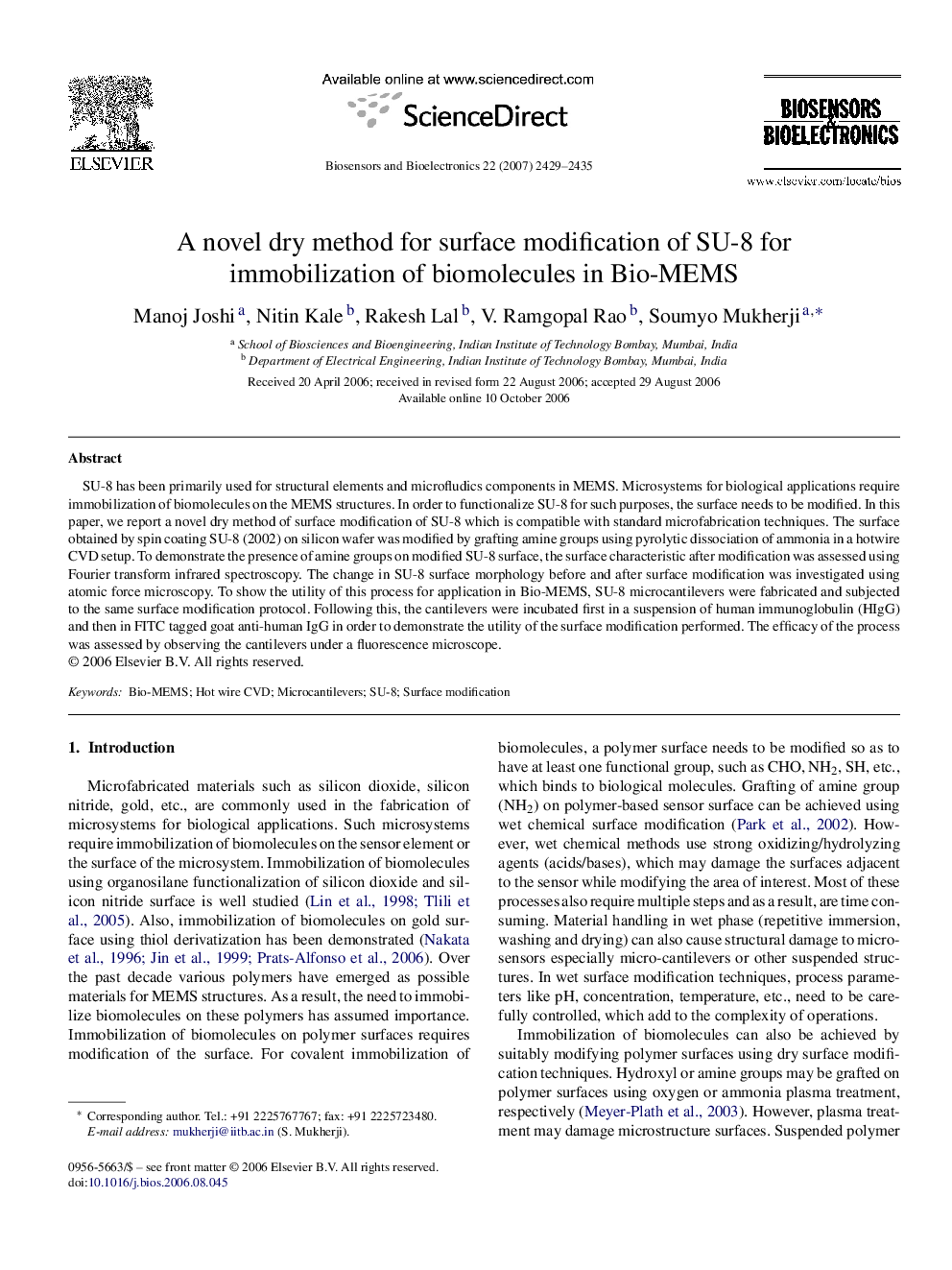| Article ID | Journal | Published Year | Pages | File Type |
|---|---|---|---|---|
| 869607 | Biosensors and Bioelectronics | 2007 | 7 Pages |
SU-8 has been primarily used for structural elements and microfludics components in MEMS. Microsystems for biological applications require immobilization of biomolecules on the MEMS structures. In order to functionalize SU-8 for such purposes, the surface needs to be modified. In this paper, we report a novel dry method of surface modification of SU-8 which is compatible with standard microfabrication techniques. The surface obtained by spin coating SU-8 (2002) on silicon wafer was modified by grafting amine groups using pyrolytic dissociation of ammonia in a hotwire CVD setup. To demonstrate the presence of amine groups on modified SU-8 surface, the surface characteristic after modification was assessed using Fourier transform infrared spectroscopy. The change in SU-8 surface morphology before and after surface modification was investigated using atomic force microscopy. To show the utility of this process for application in Bio-MEMS, SU-8 microcantilevers were fabricated and subjected to the same surface modification protocol. Following this, the cantilevers were incubated first in a suspension of human immunoglobulin (HIgG) and then in FITC tagged goat anti-human IgG in order to demonstrate the utility of the surface modification performed. The efficacy of the process was assessed by observing the cantilevers under a fluorescence microscope.
